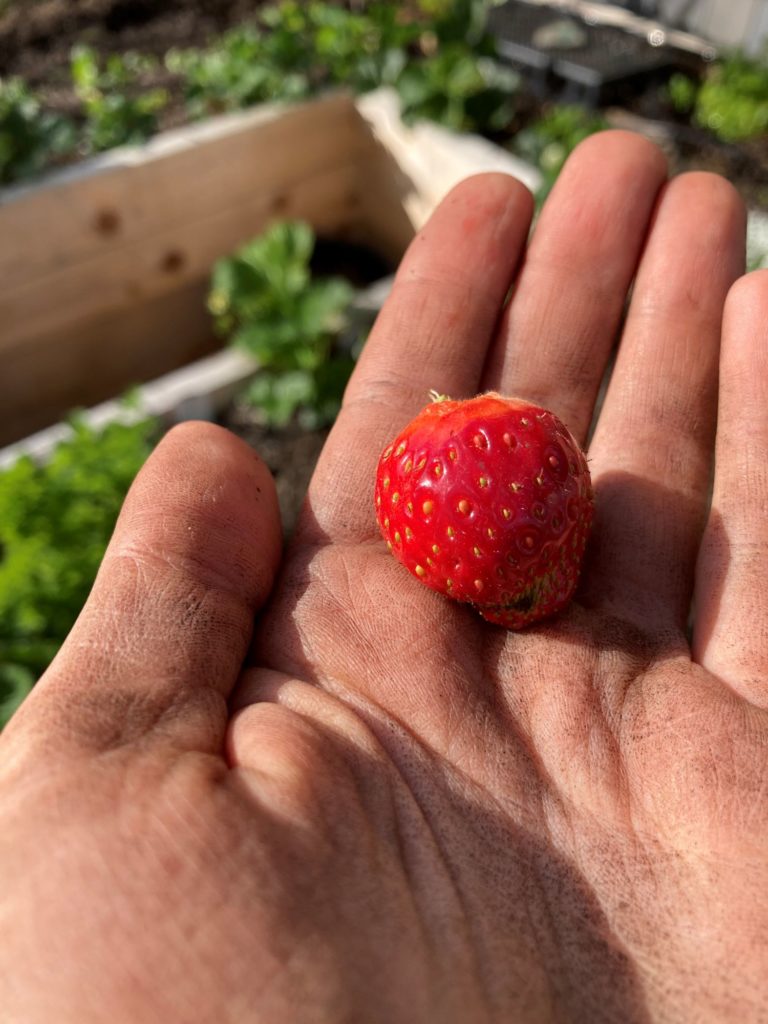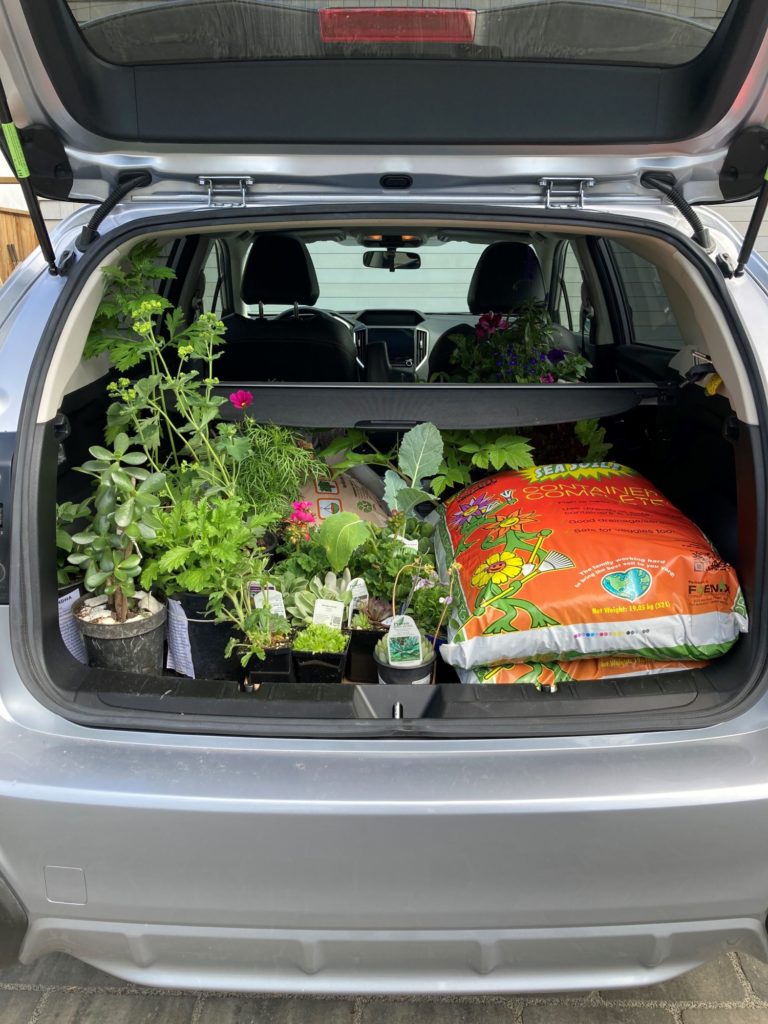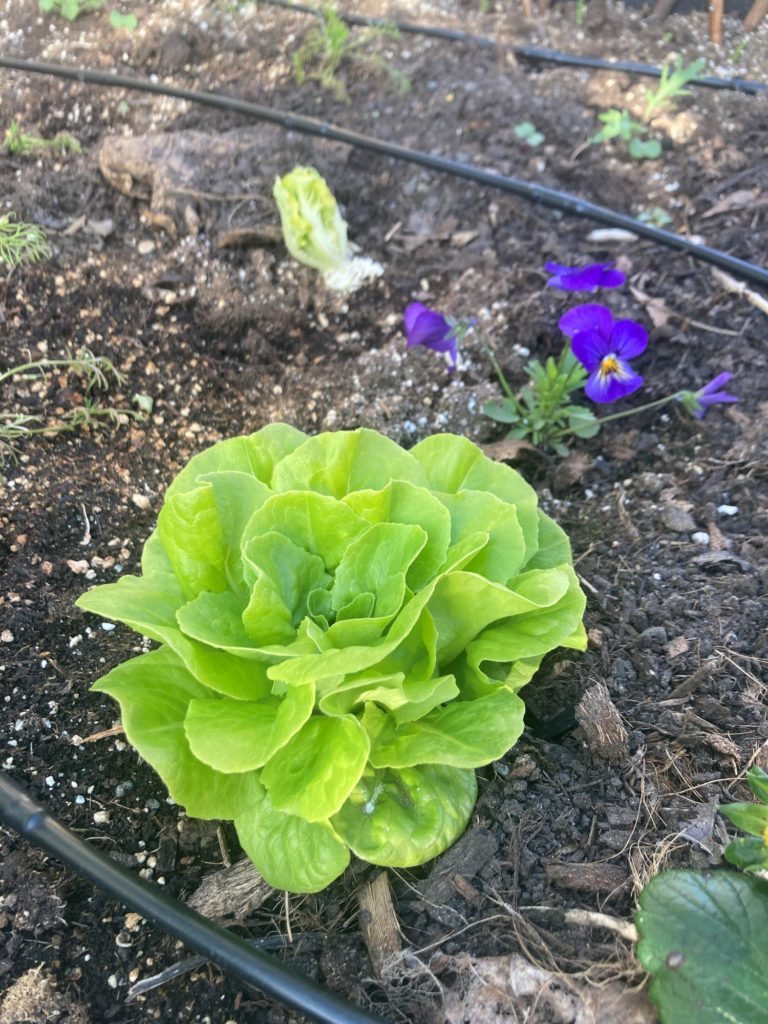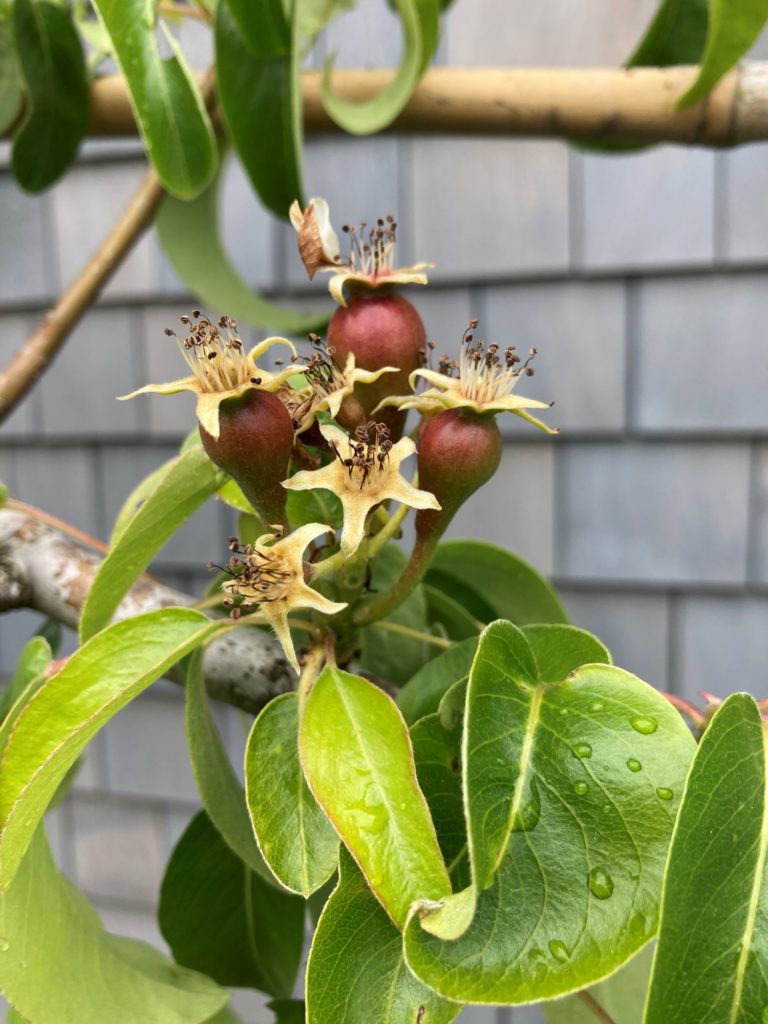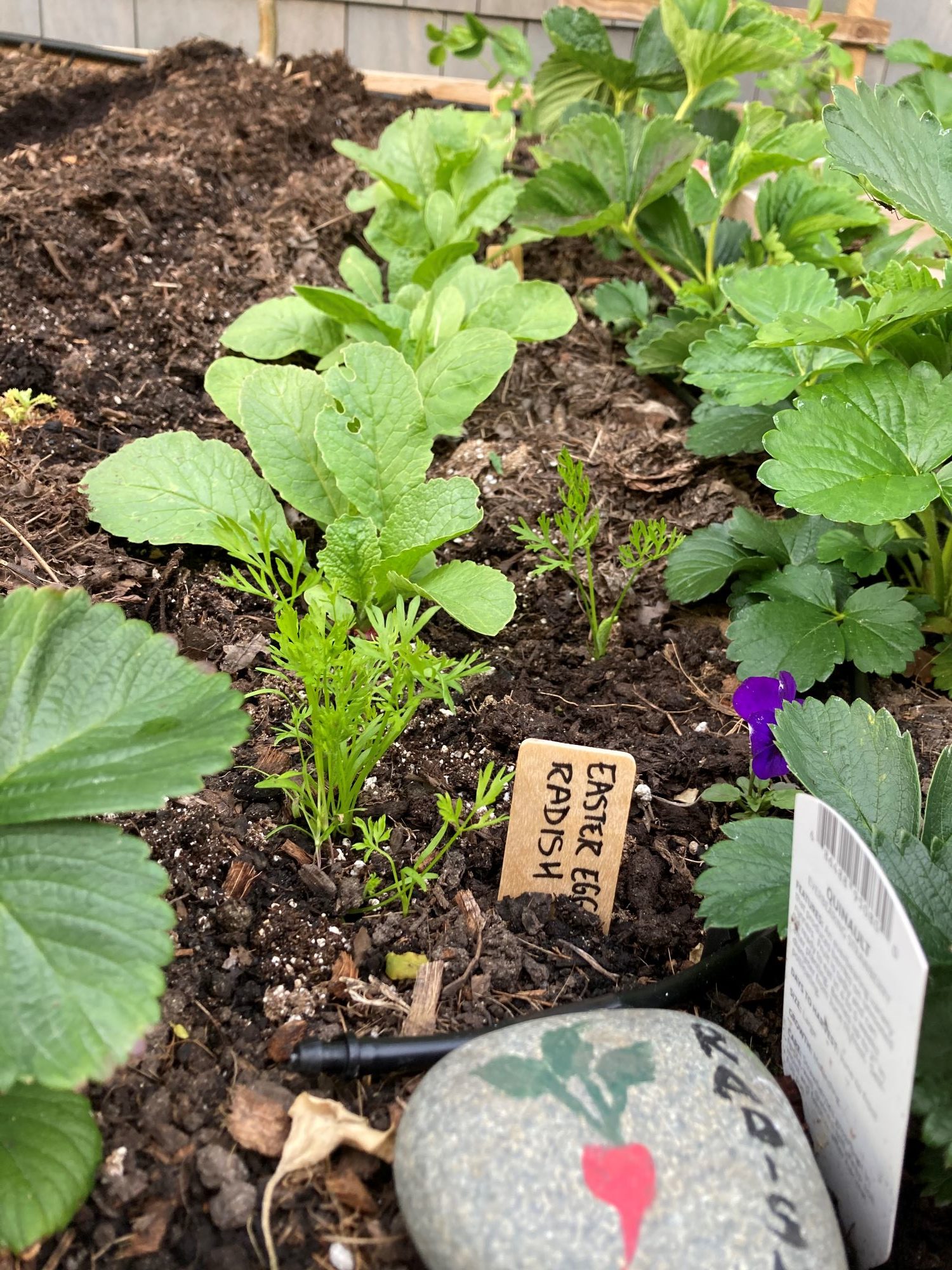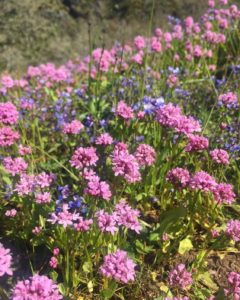I was really excited to sink my soil-crusted nails into my new raised beds this year now that I’ve had a season of relatively successful backyard gardening under my belt. Turns out that my experience and stack of dirt-smeared gardening books are no match for the new garden. The whole point of a garden is to grow plants, but nothing is growing. This spring has been cold, the new site is very windy, and the soil in the beds has been problematic. Despite this, I have had a few successes, and I am excited to build the soil in my beds and do some problem-solving so that next year things will thrive!
Here’s what I had planned for my garden this year. I tried to set up a loose four-year crop rotation of brassicas (broccoli, arugula, kohlrabi, etc.), legumes, alliums, and goosefoots (or is it goosefeet?) like spinach, beets, and Swiss chard. In addition to my planned crops, we have espalier fruit trees planted in the biggest “E” bed, and we’ve also lined this bed with almost 30 strawberry plants that will hopefully hang over the sides.
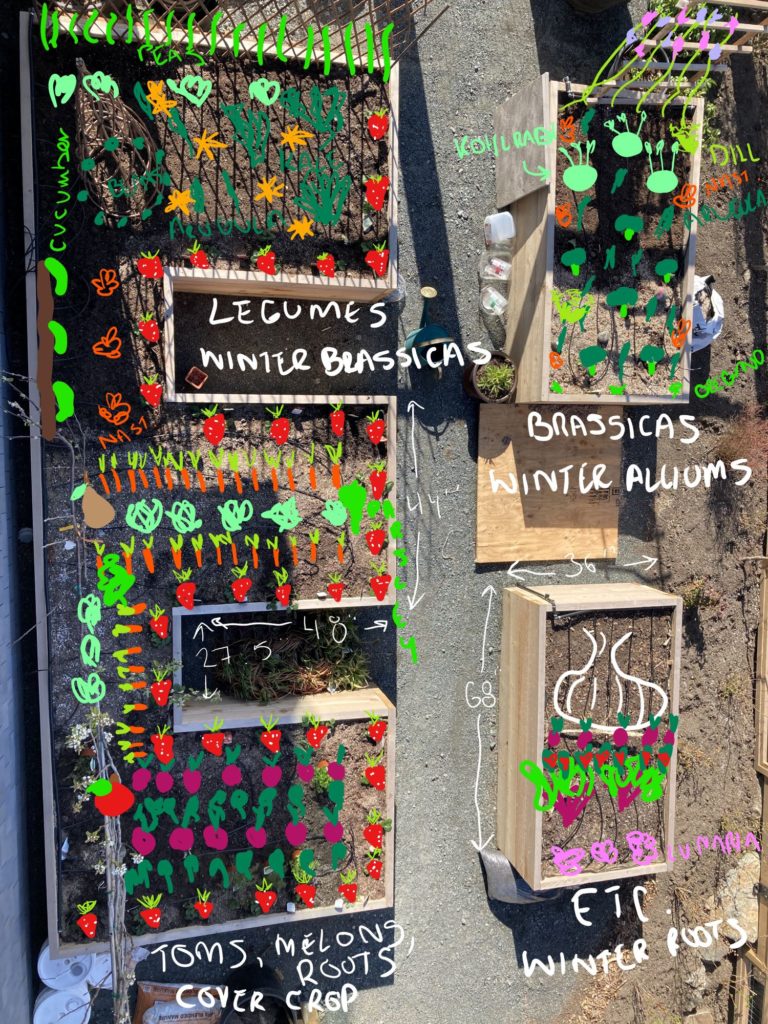
So far, I’ve had luck with some of the starts that I’ve transplanted into the beds. We’ve planted four different types of strawberry plants and will hopefully be harvesting them all summer. I planted a few culinary herbs (parsley, dill, cilantro) and some companion plants German chamomile and sweet alyssum) that are doing fairly well. The broccoli starts that I planted are reluctantly chugging along but don’t look too healthy.
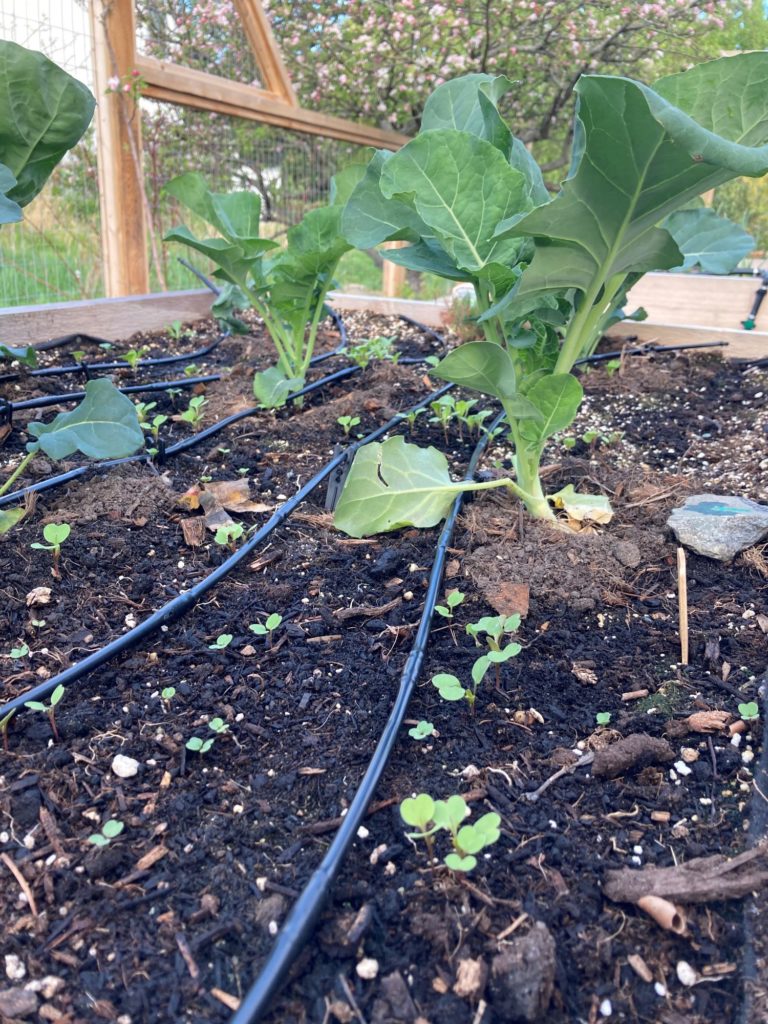
The seeds I’ve sowed, however, are almost all pretty
miserable. This is problematic considering my intention to start pretty much
everything from seed. Quick crops are taking 2-3 times longer than they should
to grow – the radishes I sowed in early April were only ready for harvest a few
days ago, though usually they’re ready after a month.
As I mentioned before, I think that wind and cool
temperatures have played a big part in this failure-to-thrive, but I also think
that the soil needs major work. Ideally, I’d be working with a compost-based
soil, but the beds are filled purely with Promix HP Mycorrhizae, which is a
growing medium composed mostly of peat moss, perlite, and limestone. I’m a bit
of a soil nerd and have only ever grown in soil before, so this whole growing
medium business has me stumped. As far as I can tell, the major issue with this
is that it’s completely devoid of nutrients.
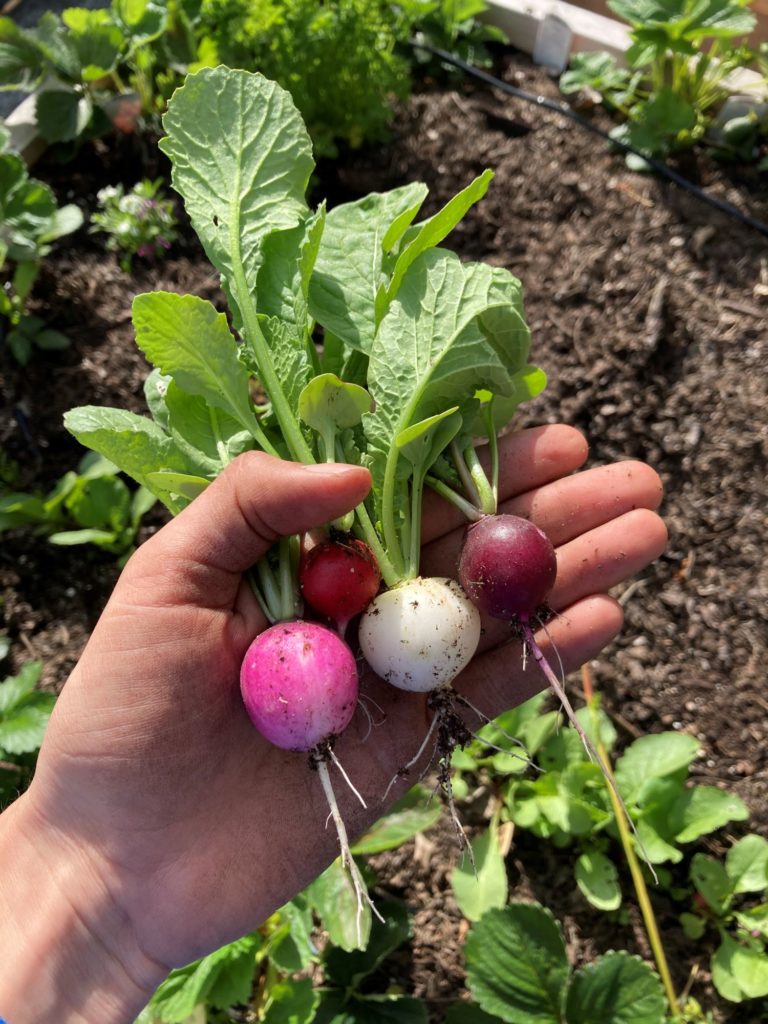
Healthy soil has a high organic matter content (indicated by its earthy smell, crumbly texture, and rich, dark colour), which is basically the opposite of this stuff. I’m pretty sure that with it you’re supposed to just fertilize the heck out of whatever you’re growing, but I’m not game for that, so I am taking it upon myself to build up the soil in the beds.
I’ve mixed in a bunch of compost and manure, which I also did when transplanting my starts. I’ve also tried to think like a worm by adding comfrey, leaf mulch, and bits and pieces of wood to encourage life in the soil. The activity of insects, fungi, and microorganisms is what builds soil, so I’ve tried to provide a diverse habitat with many nooks and crannies and lots of fodder. I also ordered some effective microorganisms (EMs), sea minerals, and liquid kelp fertilizer from the Organic Gardener’s Pantry to help things along. Hopefully between applying organic matter, EMs, a bit of fertilizer, and a nice nitrogen-fixing leguminous cover crop over winter, I will be able to zhuzh things up for next year.
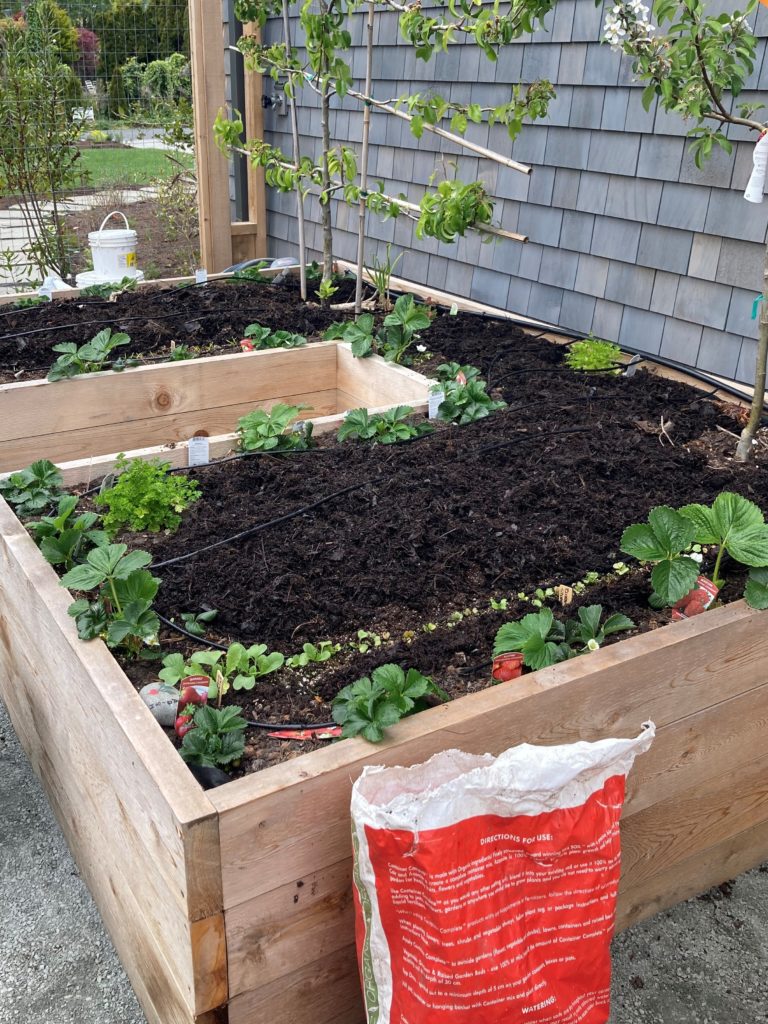
Luckily, my garden isn’t limited to the raised beds. In the fenced off area where the raised beds are, I also have a bunch of plants in pots, including potatoes and tomatoes. In addition to two more apple and two more pear trees, there’s also a berry patch that includes goumi, goji berries, salmonberries, blueberries, and raspberries. Off the kitchen we have some planter boxes to house culinary herbs (including six different kinds of mint). Many of my medicinal herbs, which tend to be deer-resistant, are in beds in the front yard, though some are still getting nibbled.
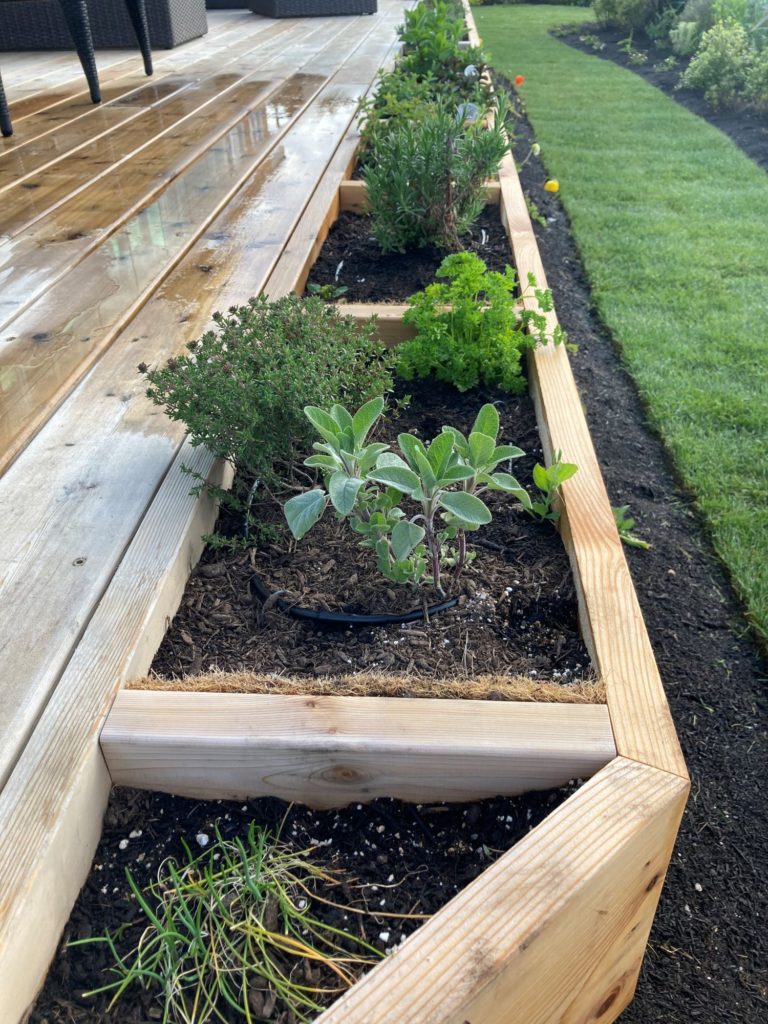
Anyways, I’m not rolling in homegrown vegetables like I was hoping I would be this year, but hopefully with a few tweaks my plants will be off and running. One of my favourite things about living here on the Saanich Peninsula (unceded W̱SÁNEĆ territory) is the strength of the local food movement and I am grateful that I have easy access to locally grown produce. If you don’t have a garden or are having a rough time of it like me, you can always support growers in your area by attending farmer’s markets and farm stands or signing up for a CSA (Community Supported Agriculture). There are tons of options out there.
If you’d like to try your hand at growing your own food, there are also many opportunities to do so. If you or someone you know are facing food insecurity and would like to receive a garden kit (seedlings and gardening materials), My FED Farm is looking for participants. The Get Growing, Victoria program’s final distribution day is on June 3 at the Quadra Village Community Centre from 11 am to 2 pm. You can also reach out to Iyé Creative to receive a burlap sack garden as part of their Palenke Greens initiative.
Do you have a garden but need an answer to a pressing question? Call the Compost Education Centre anytime between 10 am and 4 pm on Wednesday to Saturday at 250-386-9676 to get some advice. New to growing and looking for general support? Sign up for the Growing Together mentorship program to be paired up with an experienced gardener. Don’t forget to also take a look on the Growing Together website for even more resources and initiatives. There are some really exciting projects out there. Happy gardening!
